
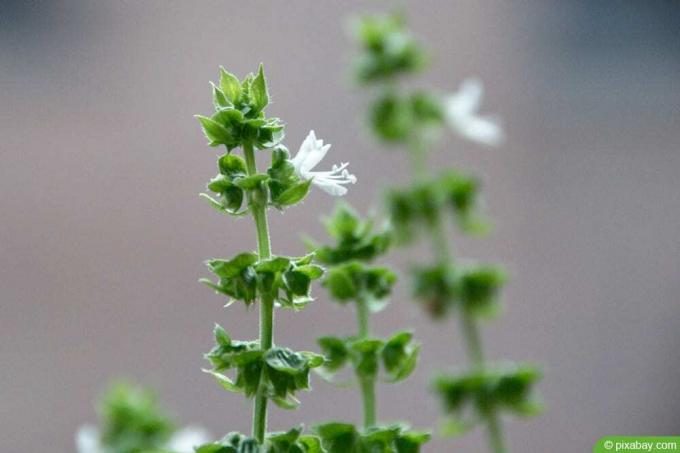
Table of contents
- From A to L
- Basil (Ocimum basilicum)
- wild garlic (Allium ursinum)
- Borage (Borago officinalis)
- Dill (Anethum graveolens)
- German chamomile (Matricaria chamomilla L.)
- Nasturtium (Tropaeolum majus)
- From L to Z
- Lavender (Lavandula angustifolia)
- Marjoram (Origanum majorana)
- Mint (Mentha)
- Lemon Balm (Melissa officinalis)
Flowering herbs often attract many insects. So they are good for nature. But what about use in the kitchen? Can the flowers be eaten without hesitation or does the quality of the entire herb suffer as a result? In fact, there are herbs that should not be eaten once they are in bloom. The following herbs, however, become even more decorative for the kitchen when they flower.
From A to L
Flowers are often not only beautiful, but can also be very aromatic with some plants and herbs.
Basil (Ocimum basilicum)
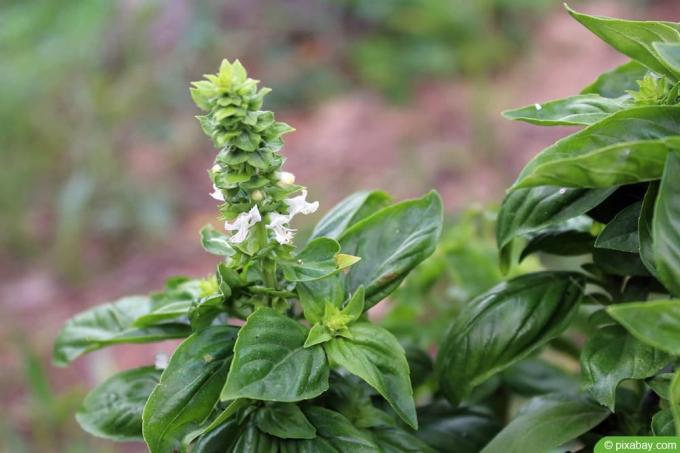
Basil is one of the most used herbs. It is also available in pots in supermarkets. The smell of the leaves is characteristic. Basil forms small, mostly white lipped flowers from June to September.
location and care
- sunny and warm, rather dry
- do not fertilize with too much nitrogen
- not frost-resistant, overwinter indoors
- propagate by seeds or cuttings
- Regular pruning promotes new shoots
- susceptible to fungal diseases, snails or dieback
use
The herb goes well with many fresh dishes. The small lipped flowers are ideal as a decoration for salads. In addition to the classic green basil, there are also varieties with different leaf or flower colors.
wild garlic (Allium ursinum)
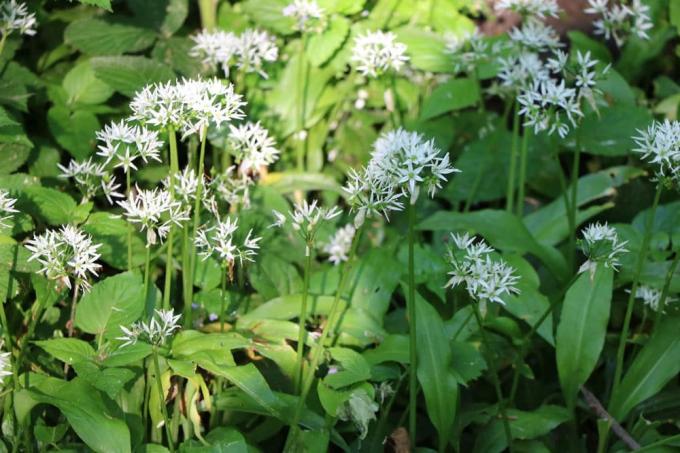
This spring-growing herb is related to chives, garlic and onion. The taste and smell are also reminiscent of garlic. In April or May, the false umbels, which consist of many individual white flowers, form.
location and care
- semi-shady, moist location, soil nevertheless permeable, nutrient-rich
- keep moist when dry, mulch
- frost-resistant and multiplies independently
- possibly install a root barrier
- rust fungi can occur or voles eat the bulbs
use
Wild garlic can be eaten fresh, but is also good for freezing. Wild garlic butter or pesto can be made from it and the flower buds can be pickled like capers.
A notice:
If wild wild garlic is collected in the forest, make absolutely sure that it is not confused with potentially poisonous plants.
Borage (Borago officinalis)
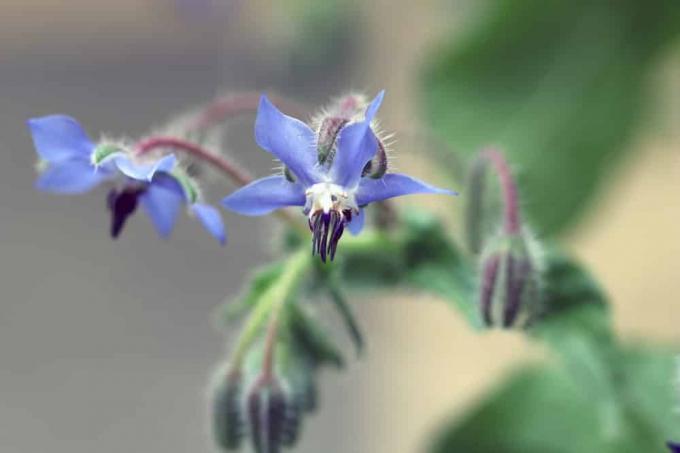
Cucumber herb is particularly popular with insects because the blue or purple flowers attract them in large numbers. They appear from May to July.
location and care
- likes sun or partial shade, prefers well-drained soil
- must be watered when dry, otherwise there is a risk of wilting
- Compost supports growth
- often self-seeds
- is considered to be robust against diseases or pests
- Aphids can appear
use
The young, soft leaves are particularly suitable for salads. The same applies to the colorful flowers. These are also well suited as a decoration for other dishes.
A notice:
Excessive consumption of borage should be avoided, otherwise the plant can be poisonous.
Dill (Anethum graveolens)
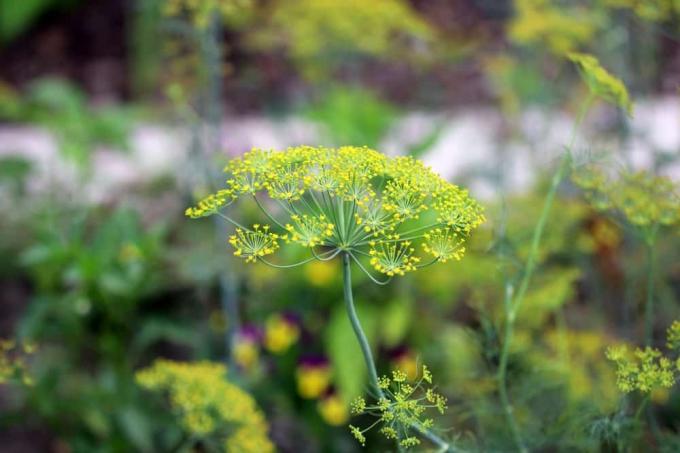
location and care
- sheltered from the wind, sunny or semi-shaded
- prefers mixed cultivation with cucumbers or carrots
- keep soil moist
- little fertilizer, weak feeder
- Propagation via seeds
- Viral or fungal diseases can occur
use
Dill is most often used fresh, but is also suitable for freezing and drying. It is suitable for salads and fish dishes, but also for pickling cucumbers. In addition to the flowers, the seeds can also be used.
German chamomile (Matricaria chamomilla L.)
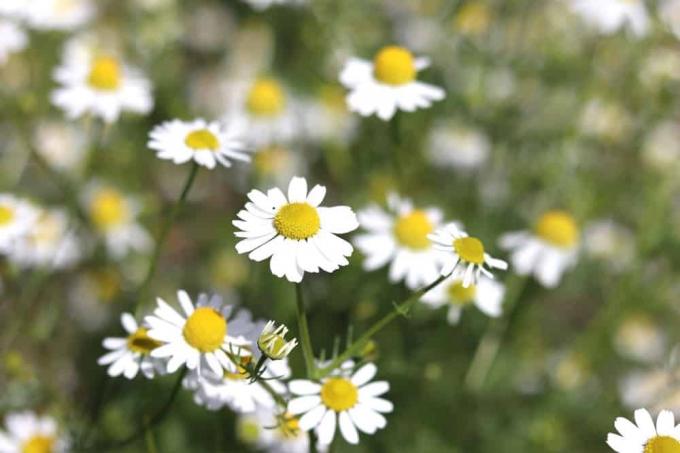
Chamomile is one of the herbs, the flowers of which are mainly used. The daisy family flowers from May to September and used to be found frequently along roadsides and fields. If the wild plant is collected, this should be done away from roads. On fields, the plant may have come into contact with pesticides.
location and care
- sunny and warm, soil deep and rather dry
- Fertilize little and don't water too much
- cutting back promotes flowering
- Propagation via seeds, light germs
- Fungal diseases can occur
use
Chamomile is often only used as a medicinal plant and the flowers are dried for this purpose. Fresh flowers are a pretty decoration for soups, salads, teas and even cakes or tarts.
Nasturtium (Tropaeolum majus)
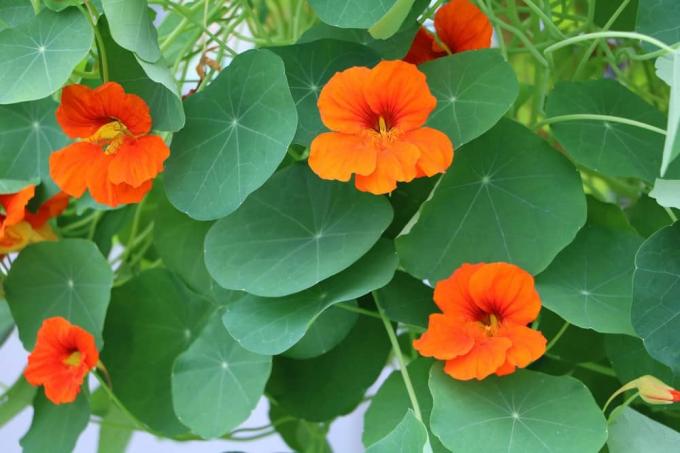
This annual climber is grown primarily for its ability to cover large areas quickly. The flower color ranges from yellow to orange to red. The flowers appear between July and October and are edible.
location and care
- sheltered, sunny, warm, not too wet
- water regularly
- too much fertilizer promotes leaf growth
- Offer climbing aid, otherwise grows as ground cover
- Propagation by seeds, self-sowing possible
- Infestation with aphids and caterpillars possible
use
In addition to the flowers, the leaves can also be used in salads. The young buds are suitable for pickling, similar to capers.
From L to Z
With the right idea, you can even conjure up some magic from flowering herbs, and not just in the kitchen.
Lavender (Lavandula angustifolia)

Lavender impresses above all with its pleasant scent, which comes from the blue lip flowers. There are also varieties with purple or red flowers. The flowering period is between June and August.
location and care
- sunny, warm, well-drained, poor in nutrients
- too much moisture makes the plant sensitive to frost
- fertilize little
- Propagation via cuttings, seeds are not bad for anyone
- insensitive, except on wet floors
use
Lavender is known for use in scented sachets, because the scent of the dried flowers lasts for a very long time. In the kitchen, desserts can be refined with the flowers. Lavender tea is considered medicinal.
Marjoram (Origanum majorana)
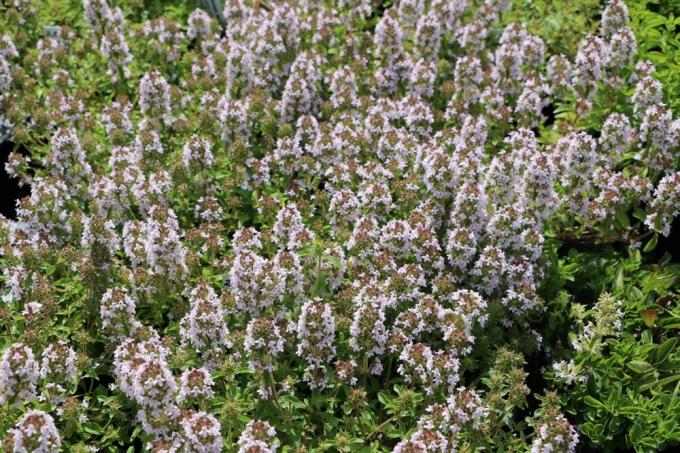
The small, mostly white labial flowers of the marjoram appear from June to September. They are often visited by bees and other insects.
location and care
- sunny, sheltered from the wind, calcareous, nutrient-rich soil
- water only when dry
- Adequate composting in spring
- not always hardy
- Propagation via seeds
- resistant to diseases and pests
use
Marjoram is mainly used to flavor potato dishes or meat. The leaves and flower stalks dry well. The scent of the flowers is long-lasting.
Mint (Mentha)

Depending on the variety, the color of the mint flowers can vary. The flowers are mostly white or pink and appear in large numbers in summer. The best-known representative of the mints is peppermint.
location and care
- sunny, semi-shady, nutritious
- water regularly
- fertilize from time to time
- Root barrier advisable when planting in the bed
- Propagation via cuttings and offshoots
- susceptible to rust fungi
use
Peppermint is considered a remedy, its essential oils are effective against headaches, among other things. In addition, varieties containing menthol are often used in toothpaste or mouthwash. Varieties with less menthol are suitable for use in salads and for seasoning.
Lemon Balm (Melissa officinalis)
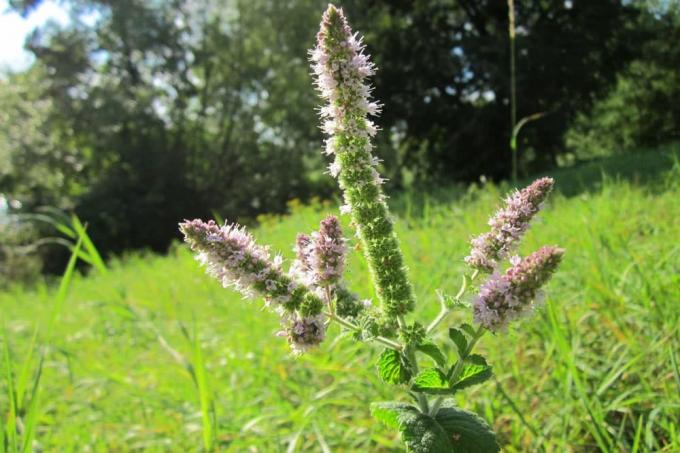
Lemon balm owes its name to the lemony aroma of its leaves. The flowering period of the perennial plant extends from June to August. The small labial flowers are predominantly white. Lemon balm was originally grown as bee pasture.
location and care
- sunny, partially shaded, protected, not too dry
- keep moderately moist
- don't fertilize too much, weak feeder
- likes to proliferate, plan for a root barrier if necessary
- Propagation via stolons, often independently
- robust, watch out for aphid infestation
use
The spicy leaves are suitable as an addition to salads, but also in homemade lemonades or other drinks. The flowers can be used to decorate desserts. When dried, the plant is suitable for use in scented pillows or as a bath additive.
 Home editorial office
Home editorial office
Learn more about growing herbs

Basil has black dots: what to do?
Especially basil bought in a pot from the supermarket tends to quickly develop black dots or spots on the leaves. This article explains why this is and what helps against it.

14 kitchen herbs that you can really keep in the kitchen
Sometimes a herb garden is only possible on the windowsill. If you don't have your own garden bed, for example, or in the months when the frost freezes the coveted greenery outside. Our list provides an overview of which herbs like the kitchen location permanently.

Parsley turns yellow: Four tips against yellow leaves
If the leaves of the parsley suddenly turn yellow, the so-called parsley disease is usually behind it. This can have many causes. If the outbreak of the disease is to be prevented, only prevention helps. More about this here.
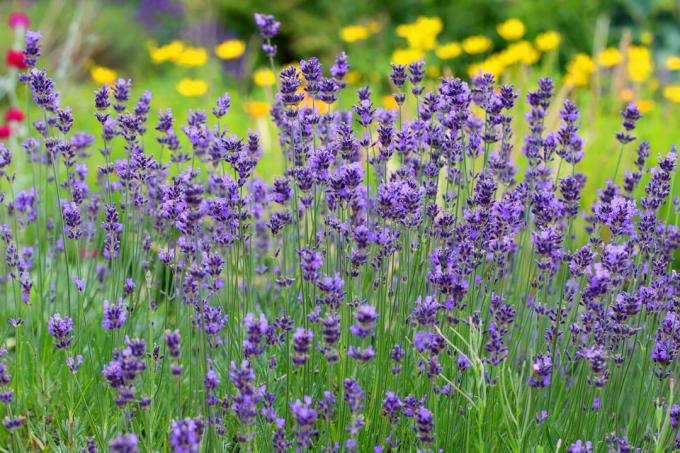
You can combine lavender with these 13 plants
Whether you use it in the kitchen, want to enjoy its fragrance or its beauty, lavender is a must in any garden. Well combined, it can strengthen other plants or protect them from pests. We present the best plant neighbors.

8 tips for cutting and harvesting herbs properly
Fresh herbs from the garden should not be missing in any kitchen. They are versatile, exude pleasant and spicy scents and are a treat for the eye with their pretty flowers. In the kitchen, they can easily replace artificial flavor enhancers.
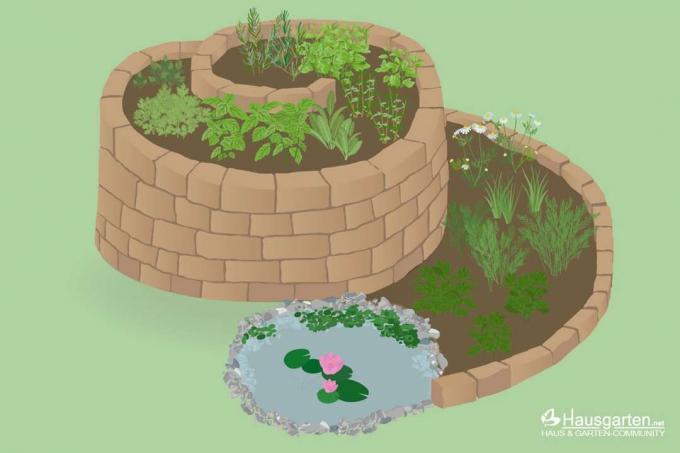
Herb spiral & herb snail: this is how it's done
A herb spiral or herb snail makes it possible to plant many different varieties in a particularly decorative way. However, this is not the only advantage of these variants of the culture. You can find out how to create them here.


